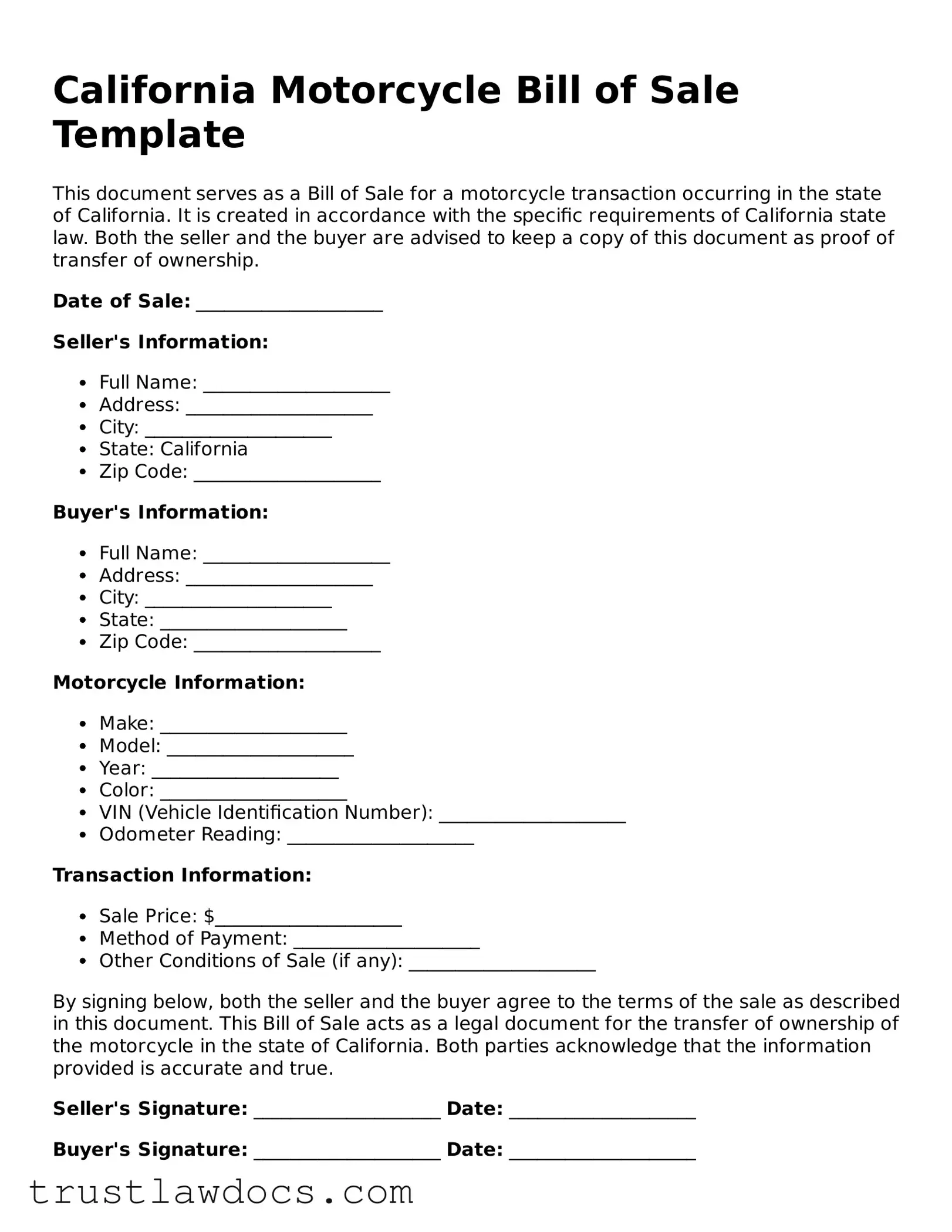The California Motorcycle Bill of Sale form is similar to the Vehicle Bill of Sale form used in many states. Both documents serve as a legal record of the sale and transfer of ownership of a vehicle, be it a motorcycle or a car. They typically include details about the seller, the buyer, the vehicle (identification number, make, model, year), and the sale (date, price). The main difference is the focus on the vehicle type, but the function and structure of the forms remain alike.
It also resembles the California Boat Bill of Sale form, which, like the Motorcycle Bill of Sale, is tailored to a specific type of property—in this case, a boat. Though boats and motorcycles are very different types of assets, the bill of sale forms for each share a significant purpose: to document the transaction details and transfer ownership from one party to another. Information about the seller, buyer, and the asset, along with the sale date and price, is crucial to both documents.
Similar in purpose to the General Bill of Sale, the California Motorcycle Bill of Sale provides proof of transaction between a seller and a buyer. However, the General Bill of Sale is more versatile, covering a wide range of personal property sales from electronics to livestock. Despite the different applications, both ensure that the transaction details are recorded accurately for legal and tax purposes.
The California Firearm Bill of Sale is another document that shares common ground with the Motorcycle Bill of Sale, mainly by serving as a legal record of the sale and change of ownership of a firearm. While one focuses on motorcycles and the other on firearms, both forms contain vital transaction details including information about the buyer and seller, the item sold, and the terms of the sale. The specificity of the item being sold is the main distinction between these two documents.
Equally important is the comparison with the Equipment Bill of Sale, used for the sale of machinery and equipment. Both forms play an essential role in the transfer of ownership and include similar information: details of the buyer and seller, a description of the item sold, and the terms of the sale. While the Motorcycle Bill of Sale is specific to motorcycles, the Equipment Bill of Sale spans a broader range of items, making it more versatile.
The California Mobile Home Bill of Sale shares similarities with the Motorcycle Bill of Sale, with both providing legal evidence of the sale and transfer of ownership of personal property. Each document is tailored to the specific type of property being sold (a mobile home vs. a motorcycle), but they function similarly by recording the transaction details, including the identities of the buyer and seller, the sale price, and the description of the item sold.
Lastly, the California Pet Bill of Sale is akin to the Motorcycle Bill of Sale in its function to record the sale and transfer of ownership, this time of a pet. Details about the transaction, including the seller and buyer's information, description of the pet, and the sale date and price, are essential elements of both forms. Though one involves the sale of animals and the other of motorcycles, the foundational purpose of ensuring a legally recognized transfer of ownership is the same.
